TODAY: Chilly start. Blue sky, pleasant. Winds: SW 8. High: 62
SATURDAY NIGHT: Mostly clear, peek at the Northern Lights? Low: 47
SUNDAY: Partly sunny and milder. High: 66
MONDAY: More clouds, turning cooler. Wake-up: 45. High: 58
TUESDAY: Plenty of sun, not bad at all. Wake-up: 41. High: 66
WEDNESDAY: Mix of clouds and sunshine. Wake-up: 47. High: near 70
THURSDAY: Intervals of sun, close to average. Wake-up: 49. High: 71
FRIDAY: Humid. Few showers and T-storms possible. Wake-up: 57. High: 77
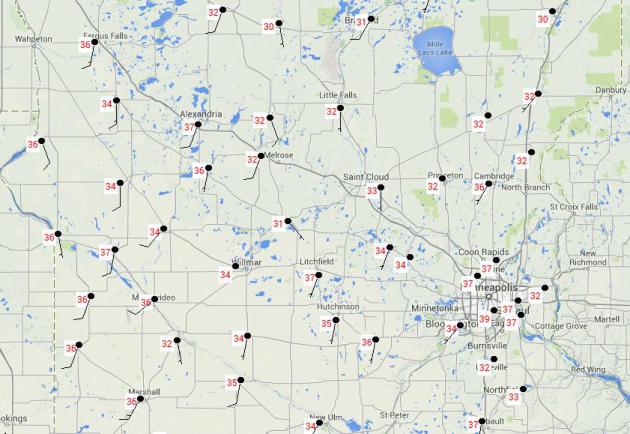
Septober 13, 2014
“Autumn..the year’s last, loveliest smile” wrote William Cullen Bryant. Forests transform into a lush patchwork of Crayola colors – the air smells sweeter, with a steady supply of free A/C from our benevolent Canadian neighbors to the north.
And there’s a better chance of spying aurora, the Northern Lights, one (of many) advantages to living at this lofty, northern latitude. With recent solar flares energizing Earth’s magnetic field we stand a good chance of taking in a free show again tonight. Skies should cooperate, remaining mostly clear into Sunday.
Give it a shot. There is nothing more magical that watching shimmering curtains of green and red dance on the northern horizon.
With any luck your garden escaped a frost overnight. The sun stays out today with highs brushing 60. I still see a streak of 60s and 70s next week. Dew points reach the muggy 60s by late week with showers and T-storms rumbling in Friday. Don’t write summer off yet: GFS data shows a few 70s and 80s into late September.
Temper any premature morning shivers with this thought: we dodged a bullet. Rapid City picked up 2 inches of snow, the earliest on record. Calgary got socked with 11 inches!
Yes, it’s early.
* Saturday morning low temperatures above courtesy of NOAA and MesoWest.
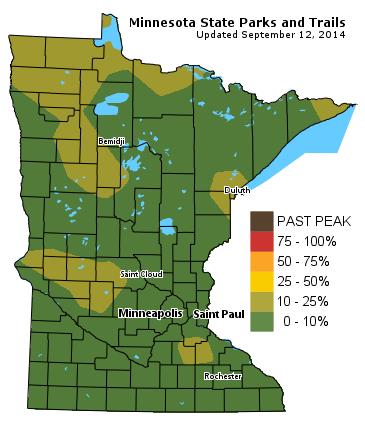
Pockets of Color. Here’s the latest Minnesota fall color map, courtesy of the Minnesota DNR. We’re still at least 1-2 weeks away from peak color up north, probably 3 weeks away for the Twin Cities metro.
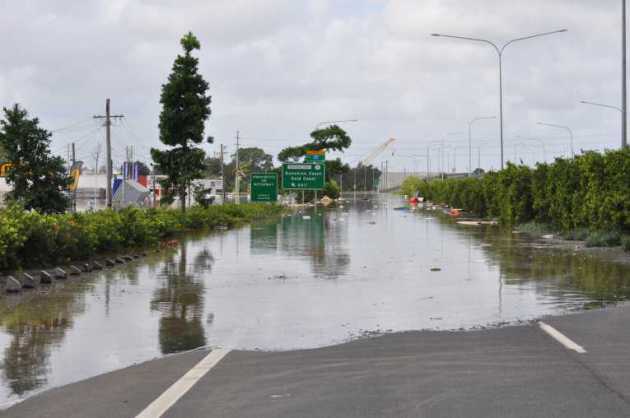
Minnesota Towns Still In the Running for Wettest Calendar Year on Record. Chaska, you still have a shot. Dr. Mark Seeley answers a question from a reader in this week’s edition of Minnesota Weathertalk; here’s an excerpt: “… For the most part the frequency and quantity of precipitation has diminished during the second half of 2014 and few if any observers are expected to set any new annual precipitation records. Those who still have a shot at setting by year’s end include: Mora with 36.03″ (currently ranked 9th wettest year); Rushford with 36.26″ (currently ranked 8th wettest year); Kabetogama with 28.70″ (currently ranked 5th wettest year); Chaska with 39.63″ (currently ranked 4th wettest year); and Little Falls with 34.16″ (currently ranked 3rd wettest year). Normal or above normal monthly precipitation for the rest of this year would likely establish new annual records at these locations...”
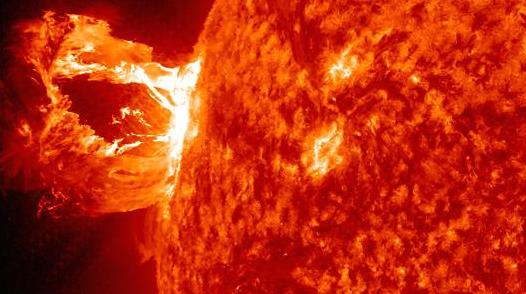
Solar Storm Heading For Earth. Yes, it’s arrived, and Minnesotans may be treated to a vivid display of the Northern Lights – hopefully the power will stay on. Here’s an excerpt from USA TODAY and CNBC: “A “strong” solar flare that launched off the sun Wednesday afternoon could cause some fluctuations in Earth’s power grid and slight disturbances in satellites and radio transmissions on Friday and Saturday. Major disruptions are not expected, even though the flare was on the high end of the solar flare scale. Wednesday’s flare followed a weaker flare late Monday. “We expect geomagnetic storm levels in the G2 (moderate) and G3 (strong) range,” said NOAA space weather forecaster Bill Murtagh…”
File image credit above: Solar Dynamics Observatory | NASA. “An April 16, 2012 solar eruption is captured by NASA’s Solar Dynamics Observatory.”
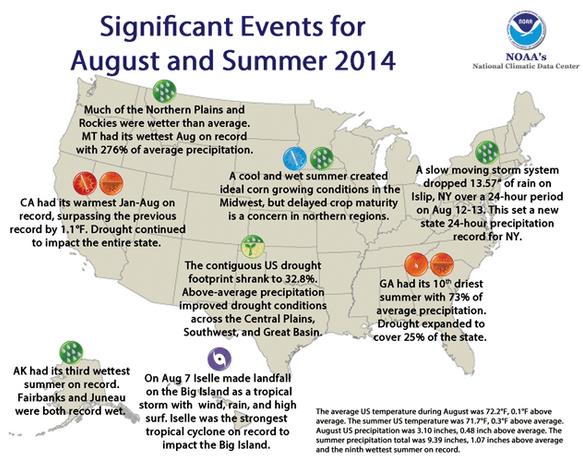
August and Summer Recap. Here’s an excerpt from NOAA NCDC:
- Persisting and intensifying drought in parts of the West: Despite beneficial precipitation in parts of the drought-stricken West during August, long-term drought conditions will continue to impact water resources and agriculture and increase wildfire risk. More information is available from the U.S. Drought Monitor.
- El Niño still probable later this year: According to NOAA’s Climate Prediction Center, there is a 60-65 percent chance of at least a weak El Niño developing this upcoming autumn or winter. El Niño conditions could have impacts on temperature and precipitation patterns across the U.S. More information is available from the Climate Prediction Center.
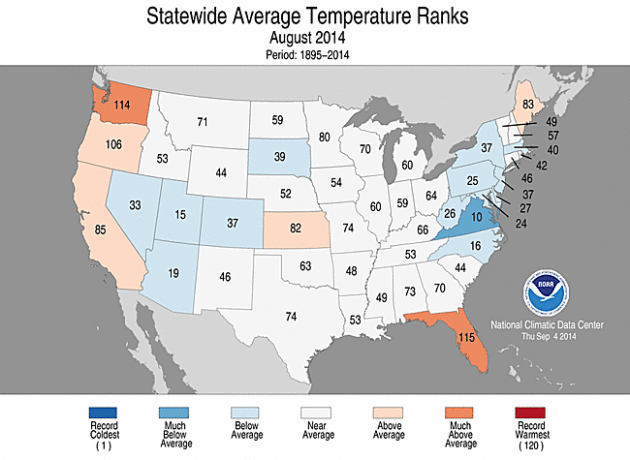
40th Warmest August on record for Minnesota. According to NOAA NCDC Minnesota’s August was the 40th warmest in the last 120 years of record-keeping; while Florida and the Pacific Northwest sizzled.
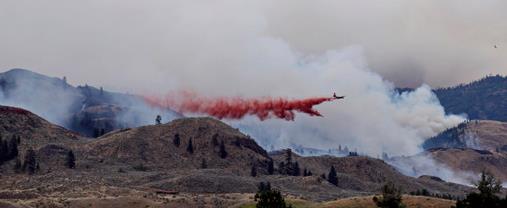
Washington Wildfire Season One Of The Most Destructive On Record, Officials Say. Reuters and Huffington Post have the story details; here’s the intro: “The wildfire season in Washington state has been one of the most destructive on record, charring 550 square miles of wilderness and destroying hundreds of homes and structures, the state Department of Natural Resources said on Thursday. The assessment came as Washington Governor Jay Inslee renewed a request for the federal government to offer assistance to more than 300 people who lost their homes during July’s record-setting Carlton Complex blaze near the Cascade Mountains. Washington has already spent $81 million battling blazes this year, with a normal operating budget of $25 million annually, said Sandra Kaiser, a spokeswoman for the Washington State Department of Natural Resources..”




Climate Stories…
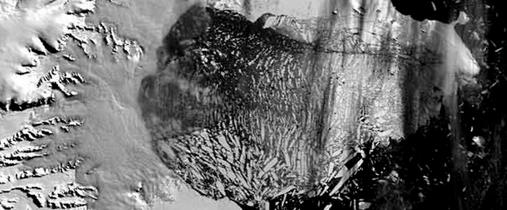
Warmer Air Caused Huge Ice Shelf to Collapse Off Antarctica, Scientists Say. Details from Reuters and Huffington Post: “Warmer air triggered the collapse of a huge ice shelf off Antarctica in 2002, according to a report on Thursday that may help scientists predict future break-ups around the frozen continent. Antarctica is a key to sea level rise, which threatens coastal areas around the world.. It has enough ice to raise seas by 57 meters (190 feet) if it ever all melted, meaning that even a tiny thaw at the fringes is a concern. Until now, the exact cause of the collapse of the Larsen-B ice shelf, a floating mass of ice bigger than Luxembourg at the end of glaciers in the Antarctic Peninsula, had been unknown...”
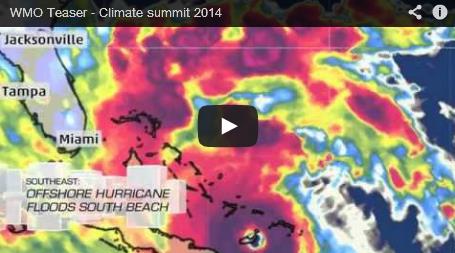
United Nations Predicts Climate Hell in 2015 With Imagined Weather Forecasts. Here’s an excerpt from a story at The Guardian: “The United Nations is warning of floods, storms and searing heat from Arizona to Zambia within four decades, as part of a series of imagined weather forecasts released on Monday for a campaign publicising a UN climate summit. “Miami South Beach is under water,” one forecaster says in a first edition of “weather reports from the future“, a series set in 2050 and produced by companies including Japan’s NHK, the US Weather Channel and ARD in Germany. The UN World Meteorological Organization, which invited well-known television presenters to make videos to be issued before the summit on 23 September, said the scenarios were imaginary but realistic for a warming world...”
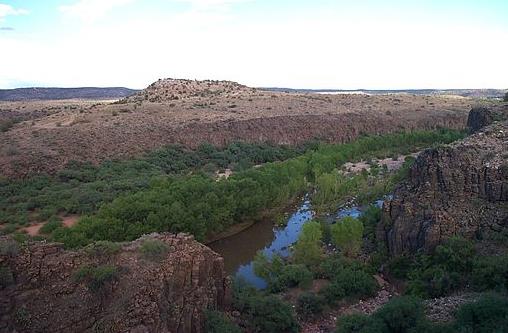
Weather Patterns Show Climate is Changing in U.S. Wet areas are trending wetter, historically dry regions are becoming even drier. No theory, not computer models into the distant future, but happening today. Here’s a clip from Climate News Network: “The climate is changing . . . and America’s heartland and southwest are changing with it. In the southwestern state of Arizona, the streams may be drying up − and that could mean that native fish species will die out. In the midwest states that citizens call Tornado Alley, the evidence is that there are fewer tornado days per year, but the density and strength of those tornadoes that do form is growing as greenhouse gas emissions continue to rise. And in the west, which is in the grip of a prolonged drought, things are looking up − but not in a good way. Relieved of the weight of water they normally bear – the 240 billion tonnes of snow and rain that have not fallen since the drought began – the land is starting to rise, with mountains as much as 15 millimetres higher...”
Photo credit above: “Streams feeding the Verde River in Arizona may be drying up.” Image: Jennifer Horn via Wikimedia Commons.
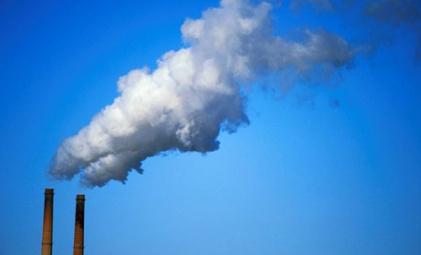
Cato Climate Change Skeptic: Rising Carbon Dioxide Levels a Sign of “Human Progress”. The ultimate spin. Here’s a clip from an explanation of this head-vice-of-a-statement at The Washington Post: “Economically literate libertarians can’t deny that, if climate change is a major risk, the rational thing to do is put a tax on greenhouse emissions. Therefore, in order to oppose that sort of government action, they have to deny that climate change is a major risk. And that’s how we get this mind-bending piece from the Cato Foundation. Last year’s sharp rise in the concentration of carbon dioxide in the atmosphere, Cato’s Paul C. “Chip” Knappenberger concludes, “is cause for celebration…”

